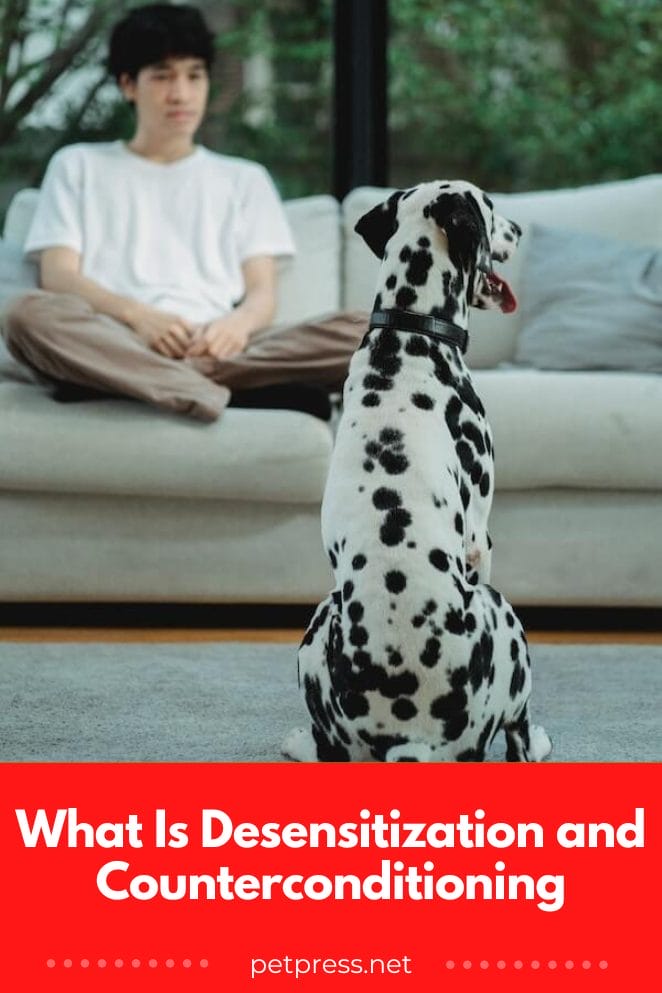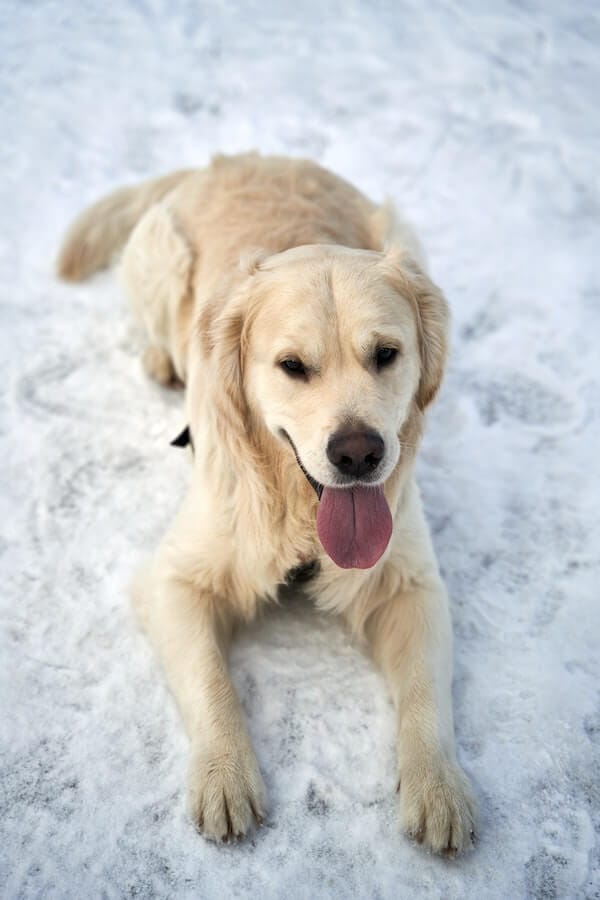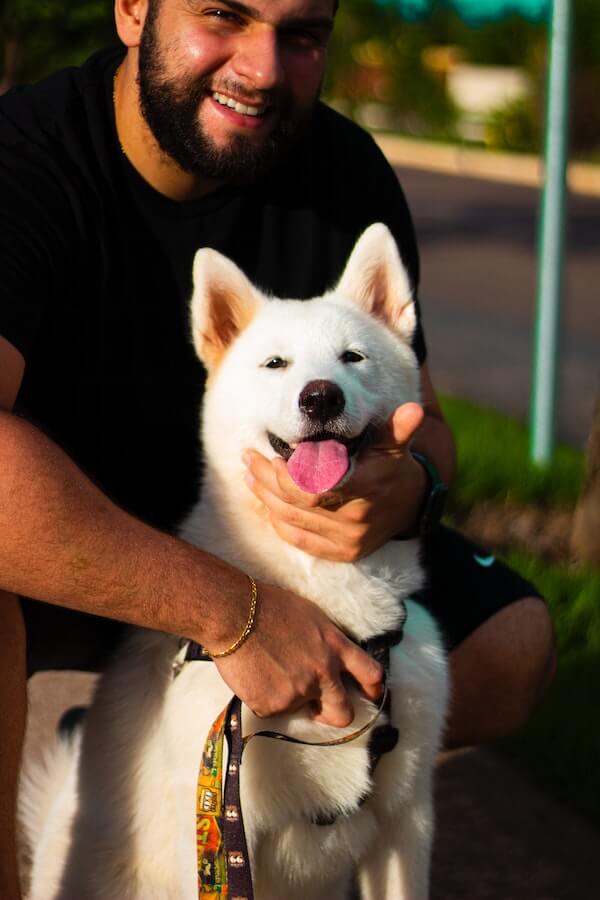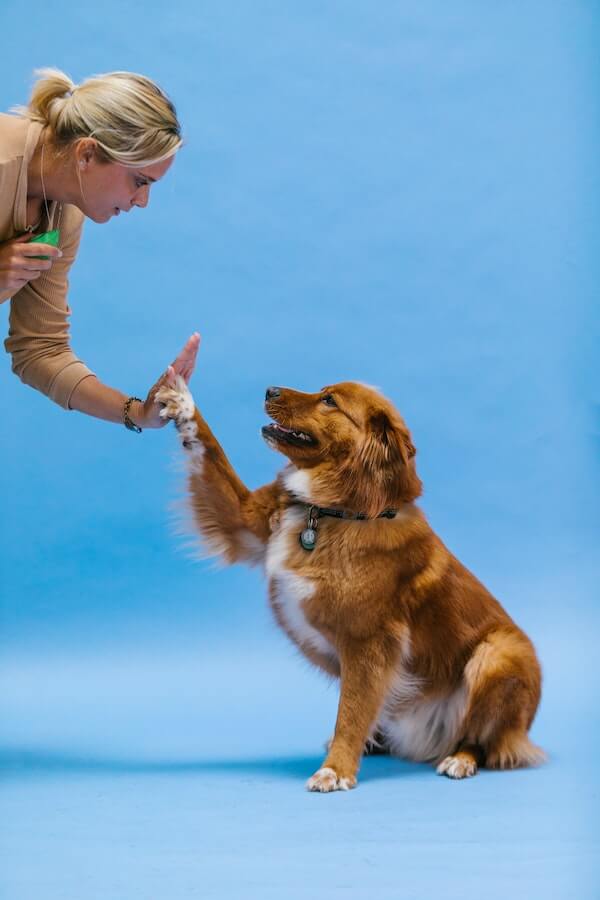
Are you having trouble with your dog’s behavior? You might have heard of desensitization and counterconditioning. Two powerful tools used to help dogs adjust their emotional responses in a positive way.
It can be an effective way to teach dogs how to relax and be comfortable around people, animals, places, events, and other stimuli they may find uncomfortable or even terrifying.
So what exactly is desensitization and counterconditioning? Let’s dive into it!
What Is Desensitization in Dogs?
Desensitization in dogs is a process used to help a dog become less sensitive and reactive towards an object, person, or situation.
It uses gradual exposure to that stimulus as well as positive reinforcement methods such as treats or praise to slowly reduce the dog’s fear.
This process can take weeks or months. It depends on the severity of the fear response and how much time is willing to be dedicated by the owner.
The goal of desensitization is to have the dog form associations with the stimulus that are positive instead of negative.
By starting with very low levels of exposure (such as seeing the item from far away) and gradually increasing over time, it allows the dog to create new neural pathways in their brain which will eventually overwrite the existing ones that create fear.
Desensitization takes dedication but it can be an effective tool for helping dogs who suffer from extreme fear or anxiety when presented with certain stimuli.
With a patient owner and consistent training, these dogs can learn to see those objects or situations in a less fearful way.

What Is Counterconditioning in Dogs
In counterconditioning, a dog is trained to replace an undesirable behavior with a more desirable one.
This form of conditioning is most effective when the reward given for the desired behavior is stronger than the motivation for the undesired behavior.
For instance, if a dog barks at strangers entering their home, counterconditioning can be used to train them to instead greet people calmly and politely.
Counterconditioning involves exposing the animal gradually to whatever triggers their fear or anxiety while simultaneously providing rewards that are much more attractive than whatever they were anxious about.
The rewards could include treats, toys, verbal praise or petting from their owner. Over time, as the animal learns that these positive reinforcements always follow, they will begin associating the trigger with the reward instead of the fear or anxiety.
Eventually, they will be able to perform their desired behavior in the presence of the trigger without exhibiting any undesirable behaviors.

How To Get Started With Desensitization and Counterconditioning For Your Dog
When it comes to training a dog, desensitization and counterconditioning are very common methods.
These strategies can be used to help your pet become accustomed to stimuli that they may have been previously scared of or anxious about. Here are five ways for you to get started with desensitization and counterconditioning for your pup:
1. Identify Your Dog’s Triggers:
Before you can begin desensitization and counterconditioning, it’s important to determine which stimuli your dog is reacting to negatively.
This could range from loud noises, being in certain environments, or being around other animals. Once you’ve identified these triggers, you can work on making them less worrisome for your pooch.
2. Introduce a Stimulus Gradually:
Start by introducing the stimulus at a low level, making sure not to overwhelm your dog.
As they start becoming more comfortable with it, gradually increase the intensity until your pup is no longer reacting in an adverse way.
3. Reward Good Behavior:
Using positive reinforcement is essential when it comes to desensitization and counterconditioning. Rewarding good behavior with treats or verbal praise will help reinforce the desired response from your pup.
4. Use Intermittent Reinforcement:
As opposed to providing rewards every time your pup displays a desirable response, try intermittently rewarding them instead.
This way, they’ll continue to come back for more training sessions in anticipation of a reward!
5. Stay Consistent:
Being consistent when it comes to working with your pet is key. If you don’t stick with these strategies, there won’t be any progress.
Make sure you set a timeline for yourself with achievable goals and stick to it!

Conclusion
Desensitization and counterconditioning can seem like daunting tasks, but with the right strategies in place they can be incredibly effective for your pup.
With consistency, patience, and a bit of positive reinforcement, you will soon have a more confident canine companion!


GIPHY App Key not set. Please check settings